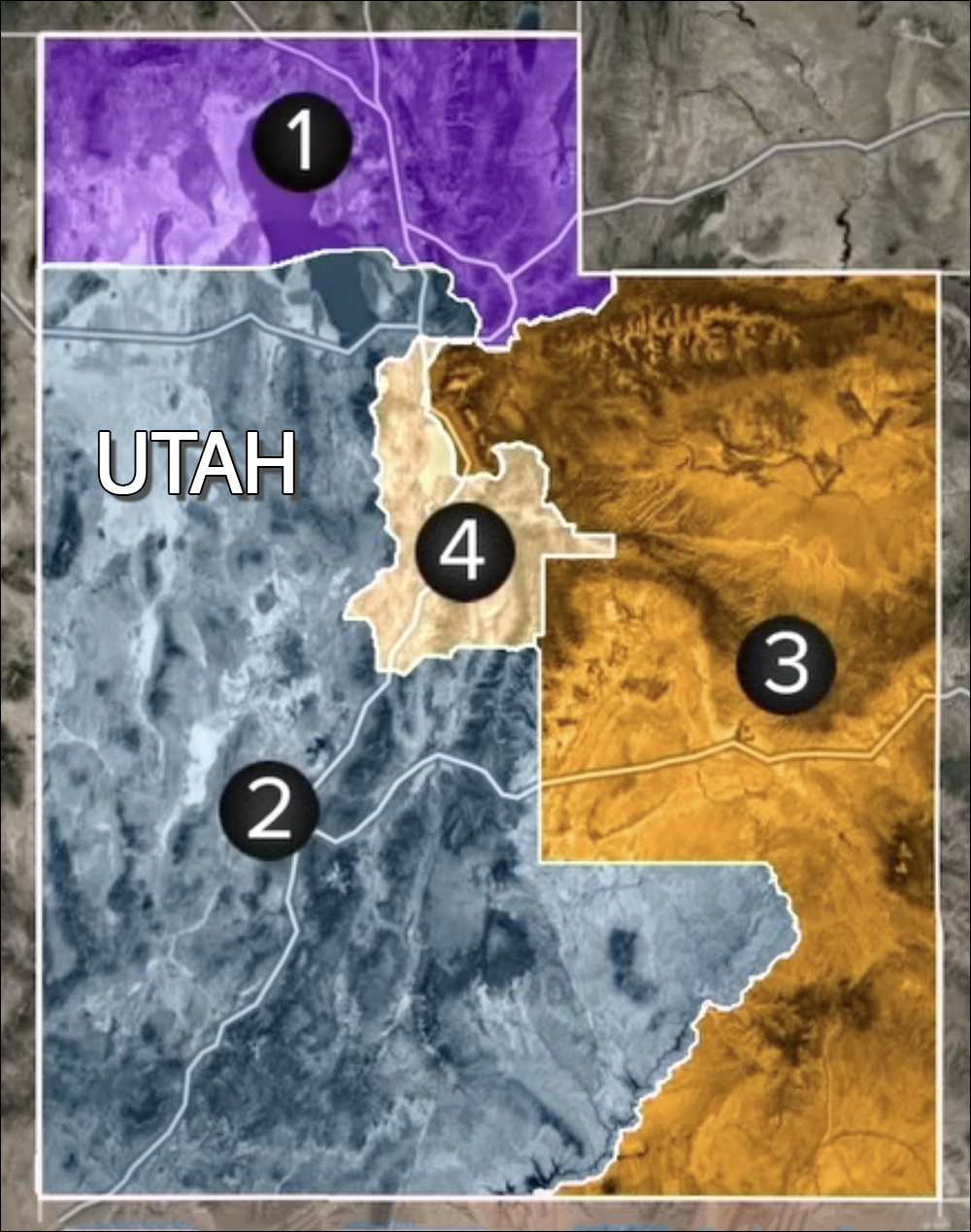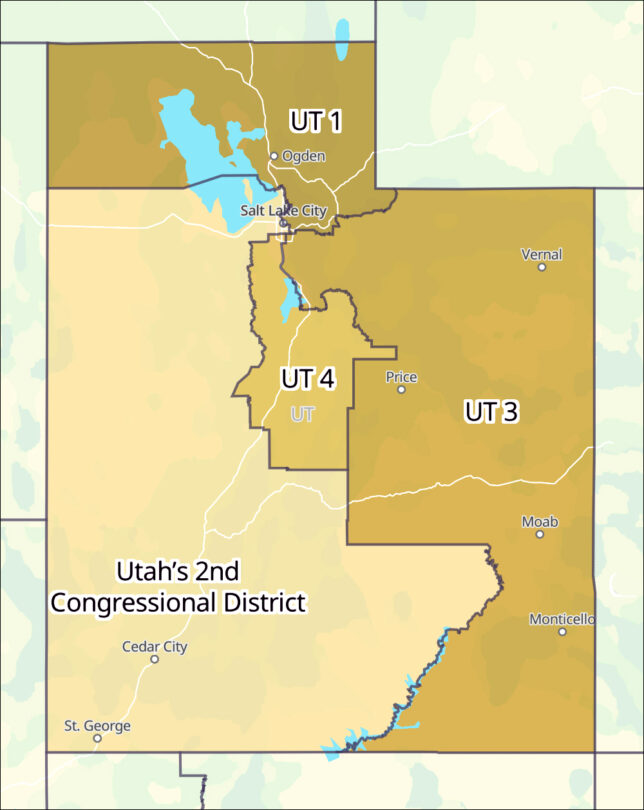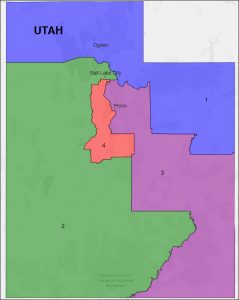
Watch this report by Fox 13 News|Utah: Utah Redistricting
By Jim Ellis — Thursday, Nov. 13, 2025
Redistricting
On Monday, the presiding Utah state judge chose a new congressional map that will significantly change the Beehive State delegation.
Previously, Judge Dianna Gibson (D) had invalidated the current map drawn in 2021 because she maintained the legislature ignored criteria that voters approved through a ballot initiative. The Utah state Supreme Court then upheld her opinion.
The result included bringing forth maps that adhered to the missing criteria. Judge Gibson chose the version that created a Salt Lake City metro district that will assuredly elect a Democratic Representative and change the Utah delegation from a 4R-0D contingent to 3R-1D.
An alternative plan would have created two Republican seats and two politically marginal districts that both parties would have had a chance of winning. The judge’s decision, however, now gives former one-term Congressman Ben McAdams (D), among others, a chance at winning a Democratic primary, which would punch a ticket to the House of Representatives.
McAdams was elected to the House in 2018, defeating the now-deceased Congresswoman Mia Love (R). He then lost two years later to current Representative and former NFL football player Burgess Owens (R-Draper).
Kamala Harris would have carried the new 1st District by a 60-37 percent count according to the Dave’s Redistricting App statisticians. The remaining three districts are all solidly Republican, featuring Trump victories with spreads from 29 to 41 points in 2024.
With the Democrats gaining a Utah seat, one of the current four Republican Representatives will be out after the 2026 election.
Of the three, Rep. Blake Moore (R-Salt Lake City) appears to have the new northern 2nd District all to himself. Though his home is not in the 2nd, his original hometown of Ogden is one of the key population centers. The other is the city of Logan where Utah State University is located.
The new 3rd CD, which looks like a backwards letter “L”, is the seat that currently would house two Republican incumbents, two-term Rep. Celeste Maloy (R-Cedar City) and freshman Mike Kennedy (R-Alpine). The district begins in the Provo area, moves south all the way to Arizona along the Colorado border, and then west to Nevada, the area that encompasses Rep. Maloy’s home turf.
Rep. Owens’ home is in the new 4th CD, which covers the west-central part of the state. This district contains a significant portion of Rep. Maloy’s constituency, which means she could also run in new District 4.
If all four Republican incumbents seek re-election, then the Maloy-Kennedy pairing is the most likely outcome. Rep. Maloy is the weakest politically in the delegation. She won the 2024 Republican primary by just 176 votes (50.1 percent) after barely securing 43 percent of the nominating convention vote. Not opting to circulate petitions, Maloy could have lost her seat in the convention had she slipped below the primary qualifying 40 percent delegate vote factor.
Rep. Kennedy is much stronger. He won the five-way Republican primary with almost 40 percent of the vote after demonstrating dominance in the nominating convention with 61.5 percent of the delegate vote.
Another scenario suggests that three-term Rep. Owens, who will be 75 years. old at the next election, could retire. If this were his decision, Rep. Maloy would likely run in the 4th District, thus leaving the 3rd CD to Kennedy.
Most of the delegation has little in the way of available campaign funds. The exception, Rep. Moore, holds almost $2.2 million in his campaign account, which compares very favorably against Rep. Kennedy’s $240,000, Rep. Maloy’s $201,000, and $167,000 for Rep. Owens. The fundraising figures are from the members’ Sept. 30 Federal Election Commission quarterly report and could have changed significantly since the totals were made public.
The new judicial map will almost assuredly be in place for the 2026 election. Since the state Supreme Court has already ruled earlier in the process, any lawsuit filed to overturn the map would have very little chance of succeeding.
Therefore, the bottom line on the just completed Utah redistricting process is a one seat Democratic gain.




